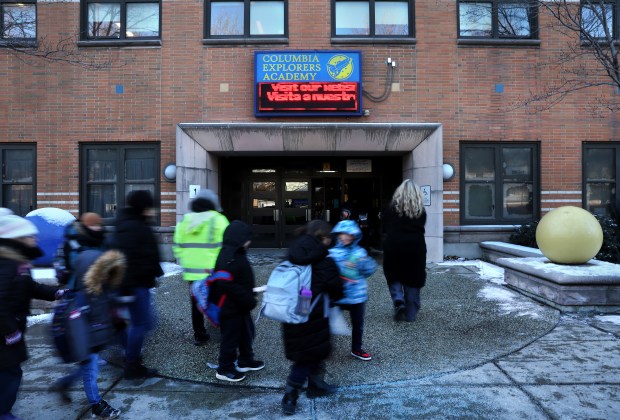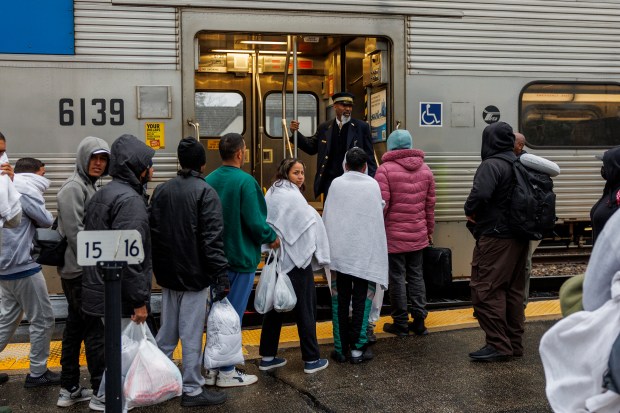Everywhere she goes, Audelia Alvarez Vasquez has been wearing her proof of permanent residency in the United States safety-pinned to the small crocheted purse that hangs around her neck: to the grocery store, to the post office, to pick up her two grandchildren from elementary school in Brighton Park.
“I have my card here,” she said. “If (U.S. Immigration and Customs Enforcement) asks me, I’m ready. It’s right here. Tied up.”
Her vigilance is a testament to the fear and uncertainty that has permeated the Chicago area over the last week, as the threat of mass deportations under a second Trump administration touched so many basic aspects of daily life, from the workforce to schools to medical care to essential social services.
Although no widespread immigration raids were reported here this week, the possibility — and reports that Chicago would be ground zero for enforcement — kept many of the region’s estimated 400,000 undocumented immigrants at home.
The week of alarm and anxiety culminated on Friday when federal officials approached a school on Chicago’s Southwest Side.
Chicago Public Schools officials initially said ICE officials showed up at Hamline Elementary School, whose student body was roughly 92% Hispanic as of 2024; many had assumed it was the first apparent immigration action taken at a Chicago school after President Donald Trump took office.
CPS officials said the school had barred federal officials from coming inside and talking to students, school officials said.
The U.S. Secret Service later confirmed that its agents — and not ICE — approached the elementary school while investigating a threat; the investigation was related to a threat against a “protectee” in connection with TikTok, a Secret Service spokesman said.
But even before the panic at the school, many of the people of Chicago were already on high alert.
“People are scared,” said Alvarez Vasquez, 56, as she watched as her grandchildren Antonio, 9 and Yulisa, 5 — both U.S. citizens — played on the steps outside their Southwest Side school on Thursday afternoon. “They don’t want to go out. They don’t even go to work much because they’re afraid of being caught or deported.”
Indeed, the week saw streets in the Little Village neighborhood, which typically bustle with crowds and businesses, conspicuously quiet. The iconic tamale vendors that normally dotted the sidewalks of the largely Mexican immigrant community were nowhere to be found.
Workers were afraid to go to their jobs. Many predominantly Latino business corridors remained empty.
Some parents kept their children out of school, fearing immigration raids could strike classrooms and playgrounds, spots that were previously considered safe havens.
Patients decided to forgo medical appointments. Church services shifted to virtual platforms instead of in-person attendance. Social service workers reported a climate of anxiety and trepidation among clients.
Advocates for noncitizens worry about the psychological and emotional costs that come from hiding.
“Isolation is just the worst for any human being,” said Linda Xóchitl Tortolero, president and CEO of Mujeres Latinas en Acción, the nation’s longest-standing Latina organization. “But for somebody who is undocumented, to not have human interaction and be in community, that is devastating.”
Spree of immigration orders
Following Monday’s inauguration, Trump signed a flurry of executive orders to radically alter immigration enforcement in the nation, a central focus of his platform during the election.
In some of his first acts as president, Trump rolled back several immigration orders from the Biden administration, including one that limited deportation priorities to those who are deemed national security threats, are accused of major crimes or who were stopped at the border.
The Justice Department has directed federal prosecutors to investigate state or local officials perceived to be interfering with Trump’s immigration policies, considered a warning to dozens of so-called immigration “sanctuary cities” nationwide, including Chicago.
In a stunning change, immigration enforcement officers will now be permitted to arrest migrants at sensitive locations like schools, houses of worship, day care centers and hospitals, after the Trump administration reversed policies generally limiting Immigration and Customs Enforcement and Customs and Border Protection from carrying out immigration enforcement at these types of spots.
“Criminals will no longer be able to hide in America’s schools and churches to avoid arrest,” the Department of Homeland Security said in a statement.
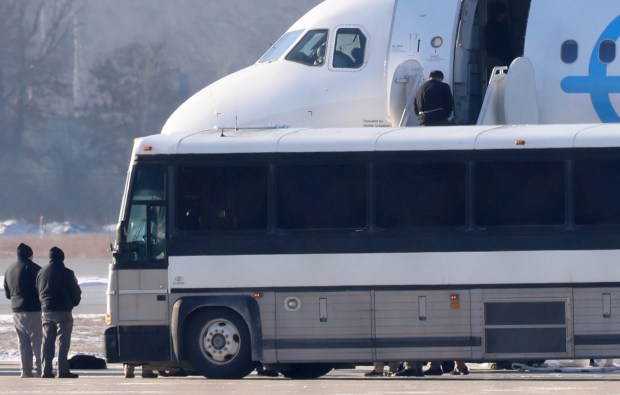
Trump is also attempting to redefine birthright citizenship, though a Reagan-appointed federal judge on Thursday temporarily blocked that executive order, calling it “blatantly unconstitutional” and an order that “boggles the mind.”
Illinois fights back
The decision marked a win for Illinois and several other states sought the temporary restraining order, which applies nationally. Illinois Attorney General Kwame Raoul praised the judge’s decision Thursday.
“The right of an individual born in this country to be a citizen of this country was enshrined in the 14th Amendment to the U.S. Constitution more than 150 years ago following the Civil War,” he said in a statement. “No president has the authority to override the Constitution. Period.”
This was just one of the ways Illinois officials have been fighting back against Trump’s sweeping immigration clampdown. All week, the politicians, school officials and faith leaders of the Chicago area have vowed to support and protect noncitizens.
Chicago Mayor Brandon Johnson and Illinois Gov. JB Pritzker — who were both personally called out last month by Trump’s border czar, Tom Homan — have put up a united front against Trump’s immigration orders, promising to push back.
After Trump took the oath of office Monday, Pritzker said that noncitizens convicted of violent crimes should be deported but suggested they should be treated separately from noncitizens who are following the law.
“Ripping those families apart, not acceptable to Americans,” Pritzker said. “And we’re going to stand up for them in the state of Illinois and do everything that we can to protect them. They’re good for our state. They’re good for our economy. They’re paying taxes. These are law-abiding people who are stabilizing communities often.”
Trepidation at schools
Many kids in mixed-status families or with undocumented parents stayed home from school during Trump’s first week in office, said Dr. Tali Raviv, a child clinical psychologist with Lurie Children’s Hospital.
Even for the children who did attend school, the fear and anxiety of the moment can hinder their education, Raviv added.
“Any time there’s any threat to parents or themselves, young people can tend to feel really powerless and scared,” Raviv said. “That can affect their ability to concentrate while they’re at school.”
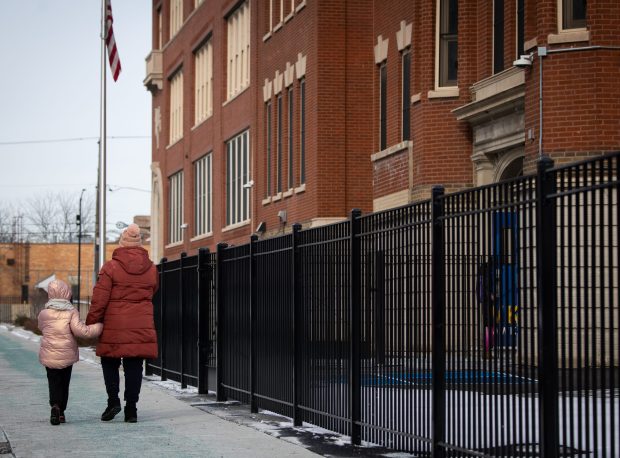
The Chicago Teachers Union, Illinois Education Association and the Illinois Federation of Teachers all strongly condemned Trump’s immigration orders, expressing outrage at the prospect of immigration enforcement occurring at schools.
“It is a sad and shameful day when schools, meant to educate and support students, are turned into sites of fear and chaos. Parents want schools to remain safe havens of learning and community, free from politicization,” Illinois Federation of Teachers President Dan Montgomery said in a statement. “Fear and instability have no place in our classrooms. This policy disrupts students’ lives, erodes trust in vital institutions, and inflicts lasting trauma, undermining the mission of education and our moral duty to protect children and the most vulnerable.”
CEO Pedro Martinez said that if federal agents come to any of the district’s schools, they will have to present a valid court or judicial order.
“We’re being very clear about our protocols,” Martinez said in an interview with the Tribune. “Anybody who comes in with any kind of order has to be reviewed by our legal department.”
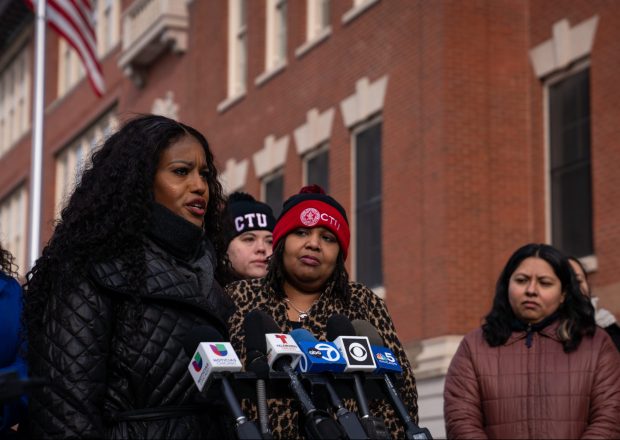
The district’s policies were put to the test Friday when the staff at Hamline Elementary School believed ICE had shown up at the Southwest Side school. Although it was later confirmed to be U.S. Secret Service agents, regardless, Principal Natasha Ortega said at a news conference afterward that school employees “followed the protocols that we’ve been trained and practiced and have discussed,” ensuring student safety.
Still, Stacy Davis Gates, the Chicago Teachers Union’s president, urged the district to do more to provide concrete training.
“What if (ICE) comes up in a school and security doesn’t have a keen understanding or gets caught up in the moment?” she asked. “My teachers are terrified, especially the ones in majority-Latino spaces.”
No-shows at the Mexican Consulate
At the Mexican Consulate of Chicago, many patrons have been canceling or not showing up for their hard-to-acquire appointments.
Most weeks, the agency serves 500 to 600 people per day. This past week, only about 200 to 300 have been appearing, said Reyna Torres Mendivil, the consul general of Mexico in Chicago.
It typically takes a long time to get appointments at the consulate due to the large number of daily requests. Even during the coldest days, the line sometimes snakes out to the sidewalk, where street vendors sell churros and Mexican other snacks.
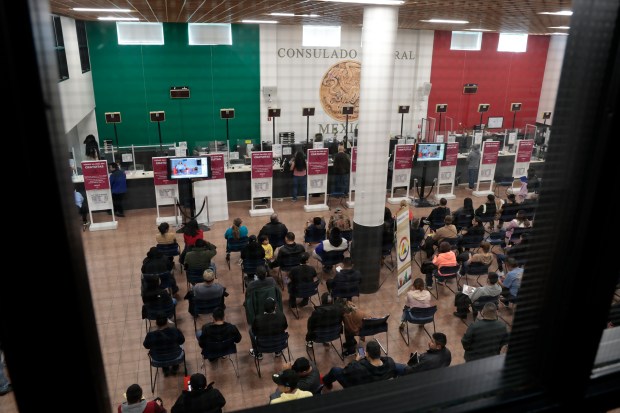
On Thursday afternoon, not even the vendors that set up shop outside could be found.
“It’s concerning because we understand people are fearful. But it is important that they process their documents,” Torres Mendivil said. “It’s important to know that there are no agents inside, it is safe to come here.”
‘Health care is a right’
Some medical providers also reported appointment cancellations, sparking fears that public health needs might go unaddressed or delayed in the wake of the immigration crackdown.
Dr. Leslie Gonzalez, who works at a hospital in downtown Chicago, said this week she and her colleagues saw a lot of cancellations or no-shows; some patients said they were afraid to come in.
Her hospital, which serves a large immigrant population, has signs posted in Spanish in waiting areas informing immigrants what their rights are. Officials are not allowed to search private areas unless they are given legal authority to do so.
“Health care is a right regardless of immigration status,” she said.
Gonzalez said she was raised in an immigrant household. As a doctor, she knows patients coming into hospitals are already in a vulnerable state.
“This is not just an immigrant issue. It’s a nationwide issue,” Gonzalez added. “And the more people we have making sure that the right information is distributed, and people are informed about their rights and what the protocols are at these places, the safer we can feel.”
Shelters, social services amid fear
Xóchitl Tortolero of Mujeres Latinas en Acción said her organization offers resources for domestic violence and sexual assault victims and other programming.
It also often refers people to shelters — which, as of this week, are no longer considered “sensitive” locations because Trump changed immigration enforcement’s long-standing policies on such locations.
Now she’s worried if these vulnerable populations will still feel safe seeking haven at shelters.
At the start of 2025, the city combined its migrant shelters with the system for people experiencing homelessness, ending a yearslong practice of publicly tracking how many new arrivals came to Chicago, mostly bused here by Texas Gov. Greg Abbott.
There are approximately 6,800 shelter beds — 3,000 from the existing homeless system and 3,800 beds that previously operated as beds for new arrivals.
Tortolero said she is already brainstorming how to react if those spaces are targeted.
Political rifts
Political divisions within the Latino community have also spurred turbulence and anxiety.
While Chicago and Illinois overwhelmingly voted for Democrat and former Vice President Kamala Harris in the November election, the Chicago area includes a strong contingent of pro-Trump Latino business leaders who felt abandoned by the Biden administration.
Southwest Side Aldermen Raymond Lopez, 15th, and Silvana Tabares, 23rd, also tried without success this month to amend the city’s sanctuary city ordinance to allow Chicago police to work with federal agencies on deportation cases with individuals accused or convicted of major crimes.
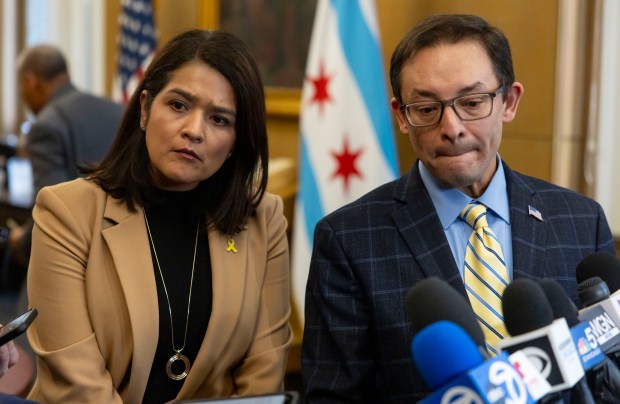
Chicago’s sanctuary city ordinance has been in effect for decades but was sharpened during Trump’s first term; it bars official cooperation between local law enforcement and federal deportation authorities while allowing immigrants living here without legal permission to use city services. It’s also intended to give assurance they can report crime without fearing deportation.
Xóchitl Tortolero said some of her undocumented community members are scared to confide in the nonprofit’s staff because they know a large percentage of Latinos voted for Trump this election cycle.
“Even among your community members, there may be somebody who will tell on you,” she said. “That is really difficult.”
Economic chaos
The long-term effects and full economic toll of Trump’s sweeping policy shifts are still unknown. But some local business owners say even the threat of immigration raids has hurt their bottom line.
Edwin Molina, co-owner of Don Churro in Pilsen, said he is seeing the impact of the fear of deportations already. Sales at the churro shop had dropped precipitously this week Molina said, by around 50% to 60%.
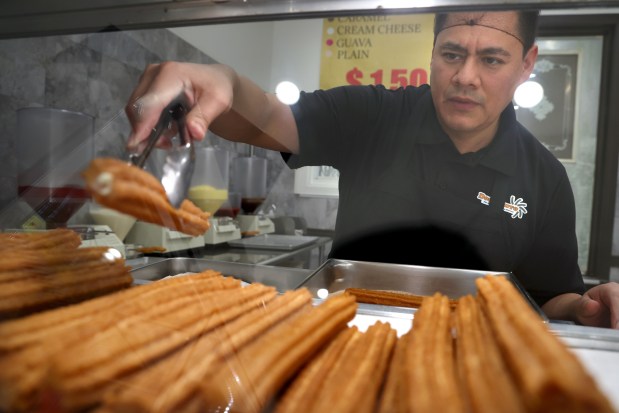
About half of the shop’s business comes from street vendors who resell the churros on the street, Molina said. The street vendors weren’t coming in to buy their churros this week, even as temperatures climbed back to more tolerable levels Wednesday and Thursday, he said.
“This administration is basically focused on harming the Hispanic community,” Molina said, describing the drop in business as “just like another pandemic.”
Though mass deportations have not yet materialized, business leaders and researchers alike have rung alarm bells about the detrimental impact a mass deportation campaign could have on the economy.
Undocumented workers made up about 5% of the Illinois workforce in 2022, the most recent year for which data is available, according to the Pew Research Center.
And across the country, undocumented immigrants paid more than $96 billion in taxes that same year, according to the Center for Migration Studies.
In a report published in October, researchers at the Center for Migration Studies laid out the broad-ranging effects mass deportation programs could have not only on undocumented and mixed-status families themselves, but on the U.S. economy as a whole.
Median household income for mixed-status households could plunge nearly 50%, to $39,000, in the event of a mass deportation program, the researchers found. And because nearly 1.5 million households with at least one undocumented person hold mortgages, mass deportations could lead to widespread defaults and destabilize the U.S. housing market, they said.
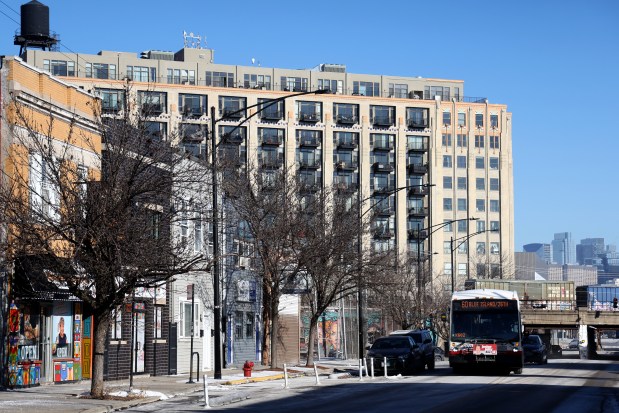
Trump frequently campaigned on promises to lower Americans’ grocery bills. But a mass deportation effort would lead to price increases at the grocery store and beyond, said University of Chicago economist Steven Durlauf.
“One way you don’t lower (food prices) is by decreasing the supply of people that produce it,” Durlauf said. “One way to lower prices is, you lower costs. And one way to raise prices is to increase costs.”
Businesses would be harmed too, Durlauf said: If undocumented workers are not here making money, they won’t be spending it, either.
This week, some of Illinois’ approximately 300,0000 undocumented workers stayed home from work, fearful they could be arrested by ICE agents if they showed up to their jobs. During the first Trump administration, federal immigration agents did conduct workplace raids, including in Chicago and its suburbs.
But many Chicagoans in the country without legal permission clocked in as usual this week, driven by a need to feed their families and pay their bills. Workers centers and unions said they were educating their members about their rights to help fight back against fear.
“We don’t have people in the group with the luxury of missing even a single day of work,” said Cristobal Cavazos, executive director of Immigrant Solidarity DuPage, which operates a workers center based in Wheaton.
Union painters with the Painters District Council 14 were showing up to job sites as usual this week despite some trepidation, said Al Barraza, organizing director.
He believed some workers’ fears had been tempered by local governments that have reiterated their support for undocumented residents. He said the painters union itself has taken steps to educate its 3,500 members, about half of whom are Hispanic, about their immigration rights.
Despite all of those efforts, “there’s definitely a nervousness about going to work,” Barraza added.
The Associated Press and Tribune reporter Carolyn Stein contributed.


